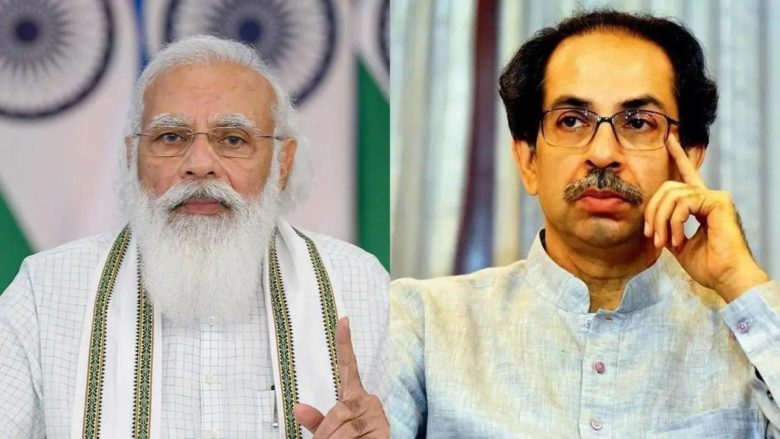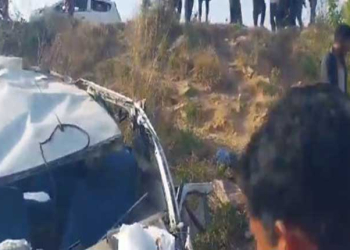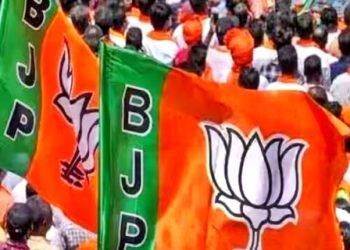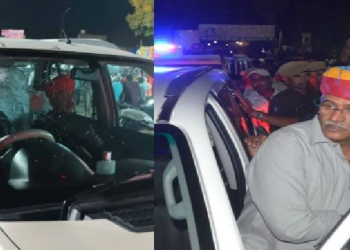New Delhi: Uddhav Thackeray’s decision to snap ties with the BJP and align with the Congress and the NCP in Maharashtra needs to be understood against the backdrop of the political narrative built by Balasaheb, revered by hardcore Hindu nationalists and Sainiks as the Hindu Hriday Samrat (monarch of the Hindu heart), and the emergence of Narendra Modi.
Balasaheb claimed that the Thackerays had been proponents of Hindutva ever since his father Keshav Thackeray started a movement in 1922. Balasaheb claimed that he was only taking forward his father’s push for Hindutva. But Balasaheb coloured his father’s reformist Hindutva agenda an even darker saffron after the latter’s death in 1973.
The 1987 Vile Parle by-poll was one of the turning points in Hindutva politics. The Shiv Sena decided to contest the seat after the death of the sitting Vile Parle MLA, Hans Bhugra. It fielded the Mumbai mayor, Dr Ramesh Prabhoo, as a ‘Shiv Sena independent’ candidate because at the time the Sena had not yet been recognised as a political party.
This was the first time Balasaheb fiercely and openly sought votes in the name of religion. In one campaign speech, he said, ‘We are fighting this election for the protection of Hinduism. Therefore, we do not care for the votes of the Muslims. This country belongs to Hindus and will remain so.’ A banner with the slogan ‘Garva se kaho hum Hindu hain’ was displayed on the dais. Balasaheb claimed that Hindutva was in danger and Shiv Sena would be its saviour. He appealed to voters to vote for the victory of Hindutva.
You will find Hindu temples underneath if all the mosques are dug out [up]. Anybody who stands against the Hindus should be shown or worshipped with shoes,’ Balasaheb said. He brought Lord Ram into the election arena too, We have come with the ideology of Hinduism. Shiv Sena will implement this ideology. Though this country belongs to Hindus, Ram and Krishna are insulted.’ The electoral narrative appeared to work Shiv Sena won the by-election.
The defeated candidate, Congress leader Prabhakar Kunte, took the matter of the communal speeches to the Bombay High Court which declared Prabhoo’s election void as per the Representation of the People Act, 1951. The court named Balasaheb for the commission of corrupt practices under the Act. Prabhoo approached the Supreme Court which upheld the high court’s judgment and concluded that Balasaheb’s three speeches amounted to corrupt practices under the Act. Since votes were sought in the name of Prabhoo, he too was declared a part of the corrupt practices. The Election Commission stripped Balasaheb of voting rights for six years.
The Supreme Court, in its judgment, said that the offending speeches made by Balasaheb violated and eroded India’s secular polity. We say this with the fervent hope that our observation has some chastening effect in the future election campaigns,’ the court added. The Supreme Court Bench, comprising Justice Jagdish Verma, N P Singh and K Venkataswami, said that it had to record its distress at the communal speeches given by top political leaders. It added that given the likely impact of such speeches, leaders need to be more circumspect in how they address voters during campaigns. But Balasaheb had already set the tone for all hardcore Hindu nationalist leaders to follow. He even questioned the court’s judgment.
Balasaheb’s Hindutva turned even more ferocious after the 1987 by-polls. Interestingly, the BJP was not with the Sena or the Hindutva agenda in this election; it had opted to support a Janta Dal candidate who championed secularism. After this election, the Sena fought and won the Aurangabad civic election, again using the Hindutva line. Thackeray led the way for the BJP on Hindutva, noted Prakash Akolkar in his book Jai Maharashtra, which documents Shiv Sena’s history.
The BJP was forced to abandon its Gandhian socialism after Balasaheb’s strategy won the popular vote. Balasaheb did not just introduce hardcore Hindutva narrative into India’s electoral politics but also placed Lord Ram at its centre, as mentioned earlier. During the Vile Parle elections, the Sena objected to how Dr B R Ambedkar spoke of Ram and Krishna in his writings, especially Riddles in Hinduism. The government of Maharashtra was publishing his collated works and the Sena objected to this. For Balasaheb, the Vile Parle election verdict was the victory of Ram and Krishna and a ‘licence’ for the formation of a ‘Hindu Rashtra’. It was God’s wish to put this ‘licence’ in his hands, said Balasaheb, and claimed that the process of building the Hindu Rashtra would begin from Maharashtra before spreading across India.6
Hindutva and nationalism proved to be powerful political tools and the Sena wore its 1987 victory, and the subsequent court reproof, as a badge of honour. According to Uddhav, 1987 gave a specific ‘direction’ to Indian politics. He claimed that the Sena propelled Hindutva politics long before the BJP. That election (1987) showed that India needs the Hindutva ideology and that this ideology can lead to electoral victory. Then the BJP also realised it. Honourable Advanisaheb started the rath yatra,’ Uddhav said in an interview in Saamana.
He pointed out that Pramod Mahajan and Gopinath Munde joined the Hindutva bandwagon after this, starting the era of the Sena-BJP alliance. After 1987, Balasaheb talked about hardcore Hindutva without worrying about the political or legal consequences. His popularity soared as the media broadcast his sensational statements to a national audience. He became, for his followers, the ‘Hindu Hriday Samrat’.
The year 1992 was a decisive chapter in India’s politics. The demolition of the Babri mosque gave BJP a stronger hold on Hindutva. Riots broke out in Mumbai in December 1992 and January 1993, killing about 900 and injuring around 2,036. The Sena’s role in the riots was highlighted by the Srikrishna Commission appointed by the Maharashtra government to probe the riots. The panel named Balasaheb in its report.
Saamana was spewing fire and Mumbai was gripped by fear. It was around this time that the BJP leader Sunder Singh Bhandari claimed that the Babri mosque was demolished by the Sena cadre. Sujata Anandan, a reporter with a national wire service, called Balasaheb for a reaction to this statement and reported that he sounded ‘flummoxed’ when he heard about it. He asked her to call him back for a response and later said, Well, if my Shiv Sainiks have brought down the mosque, I can only be proud of them.’
Anandan further claims that Balasaheb knew that no Shiv Sainik was present in Ayodhya during the demolition. However, Bhandari had given away an ace to Balasaheb, he became the hero of hardcore Hindus, boasting that his men demolished the mosque. This line was repeated often by Uddhav and the rest of the Sena.
(IANS)



















